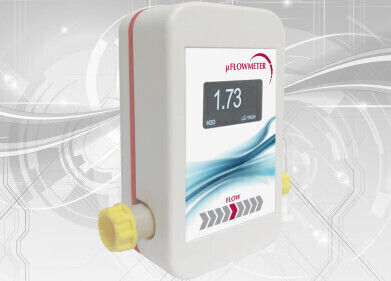LC-MS
Chromatography Discovers Vitamin D Deficiency in Sun-Soaked Kuwait
Aug 26 2018
Vitamin D is one of the micronutrients we need to be healthy. This is especially true for youngsters as it helps maintain proper growth and allows bone minerals to accumulate. One of the key avenues to acquiring a sufficient amount of vitamin D in the body is through sunlight.
Whilst it is perhaps understandable that in the UK there is a significant quantity of the population that could be vitamin D deficient – would you expect a country like Kuwait to also have adolescents with low vitamin D levels? Well, that is what a recent study published by the BMJ - Vitamin D status among adolescents in Kuwait: a cross-sectional study – has found, and chromatography was key to the study.
Studying the sun effect
In a sun-drenched country such as Kuwait you might expect that everyone has sufficient vitamin D levels. But, what are the vitamin D levels in Kuwait? As the report states there has not been too many high-quality reports on the status of vitamin D levels – not just in Kuwait, but in several other states in the Gulf region too. So, the authors of the report set out to put this right, in Kuwait at least.
It is well-established that the main contributor to vitamin D levels in humans is from the sun. Vitamin D is produced by an endogenous reaction to the sun’s UVB light. You don’t need too much sunlight particularly when the sun is high in the sky, certainly less time than it takes to burn in the sun. Factors that can influence how much vitamin D a person has include avoiding sun exposure, skin pigmentation and having a high BMI.
Analysing vitamin D by chromatography
Kuwait is a relatively small country, with a population of just over 4 million – around 25% are under 19 years of age. The study looked at students between 11 and 16 from across Kuwait. Only healthy students were included in the study – although minor illnesses were allowed – to make sure there were no extraneous factors affecting vitamin D levels.
Blood samples were taken and analysed for vitamin D levels. Serum 25-hydroxyvitamin D (25-OH-D) concentration is the best marker of vitamin D status, it is the major form of vitamin D circulating in blood and best represents the level of vitamin D due to both sunlight and diet. The use of chromatography to analyse serum samples is discussed in the article, Measurement of Drugs of Abuse by Liquid Chromatography Tandem Mass Spectrometry using Fully Automated Sample Preparation.
The study found that vitamin D levels in the adolescents tested was low, despite living in a country where the sun shines over 76% of daylight hours. The authors suggest that this is primarily down to sun avoidance behaviour. They suggest that advice regarding vitamin D supplements and food fortification should be considered.
Digital Edition
Chromatography Today - Buyers' Guide 2022
October 2023
In This Edition Modern & Practical Applications - Accelerating ADC Development with Mass Spectrometry - Implementing High-Resolution Ion Mobility into Peptide Mapping Workflows Chromatogr...
View all digital editions
Events
Apr 23 2024 Kintex, South Korea
Apr 23 2024 Seoul, South Korea
Apr 28 2024 Montreal, Quebec, Canada
May 05 2024 Seville, Spain
May 15 2024 Birmingham, UK














